This handy folding test track is built on a lightweight 2 x 4-foot table that holds a pair of N-scale test loops – one for narrow gauge, and one for standard gauge. A pair of hinged angle braces and flush hangers support the open test track, and it’s held in its folded position by a magnetic cabinet latch mounted under the top edge.
I built the table shown in the photos and illustration from a 2 x 4-foot piece of 1⁄8″ hardboard that’s framed with strips of 1″ square hardwood glued in place. These strips are sold in 48″ lengths at home improvement stores. The angle braces are also hardwood strips. I mounted my test track on the door of the modular workshop cabinet I described in the April 2002 issue of Model Railroader.
Both loops are secured with spikes driven through holes I drilled through the ties and hardboard. I spaced these fasteners at about 2″ intervals near the rail joints and curves, and about 4″ apart on straightaways. [Another possibility would be to secure the track with latex construction adhesive or adhesive caulk. – Ed.]
I attached the test layout to my workshop door by carefully meas-uring the locations of the pivot screws and drilling pilot holes for them. Then I enlarged the holes in the braces so they could move freely, and drove the screws into the sides of the table.
I marked the hinge positions shown in the drawing and installed half of each hinge on the lower door spaced 24″ apart.
To get everything in the right position, I started by mounting the female hangers on the end of the test track, about 3″ in from the outside edges. Then I fit the lower hinges together, slipped the cotter pins into place, and checked the layout’s fit against the door.
I also added a small sliding bolt that engages a hole in the door when the test track is open and in the operating position. This safety bolt prevents the test track from disengaging from the clips if anyone happens to press down too heavily on the free end of the table.





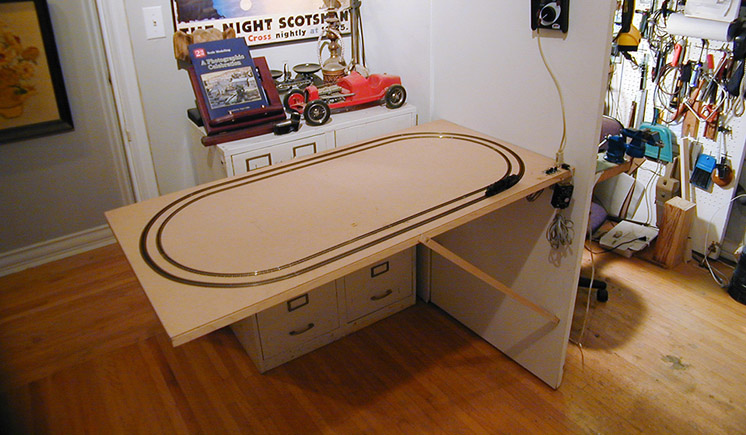
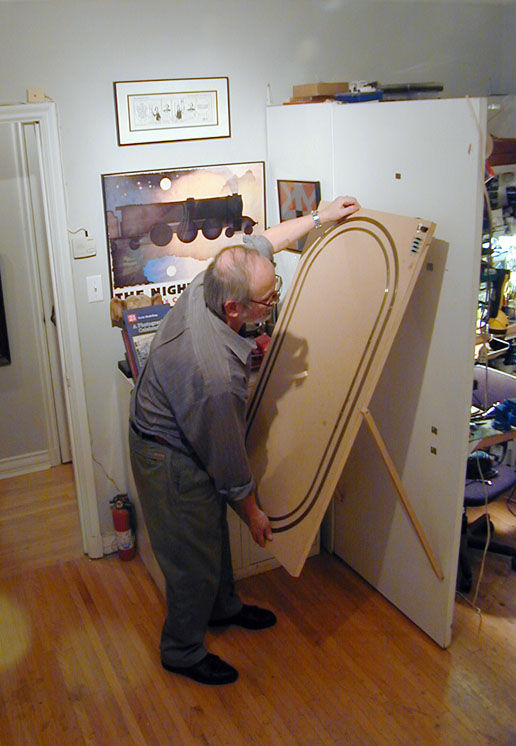
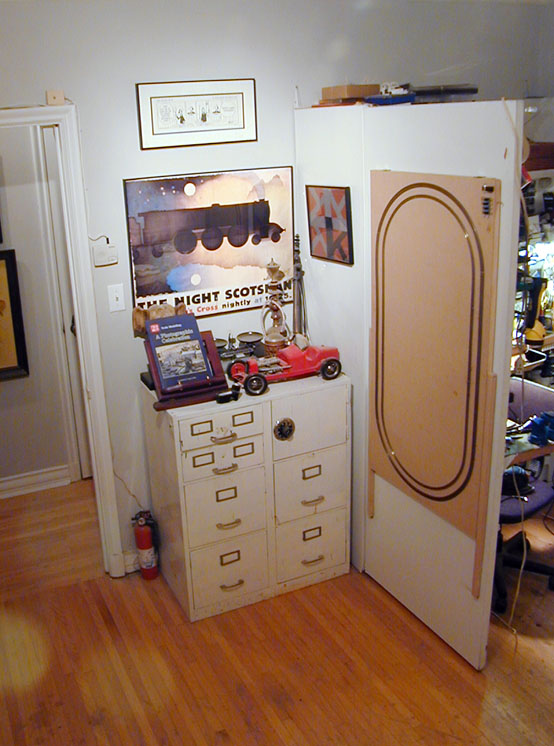
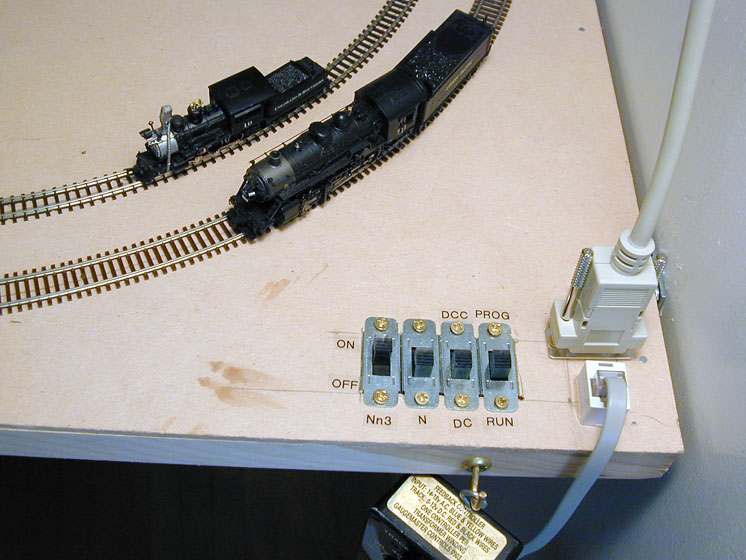
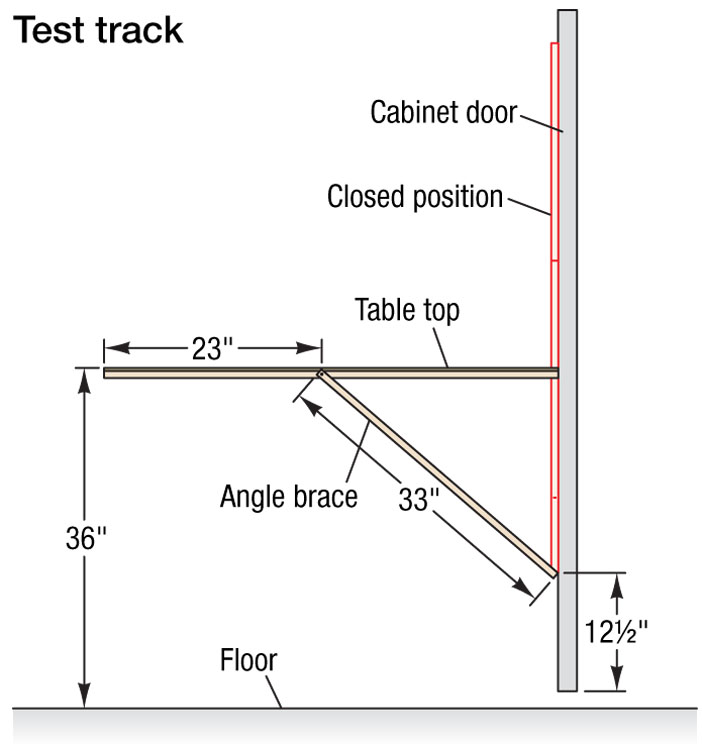

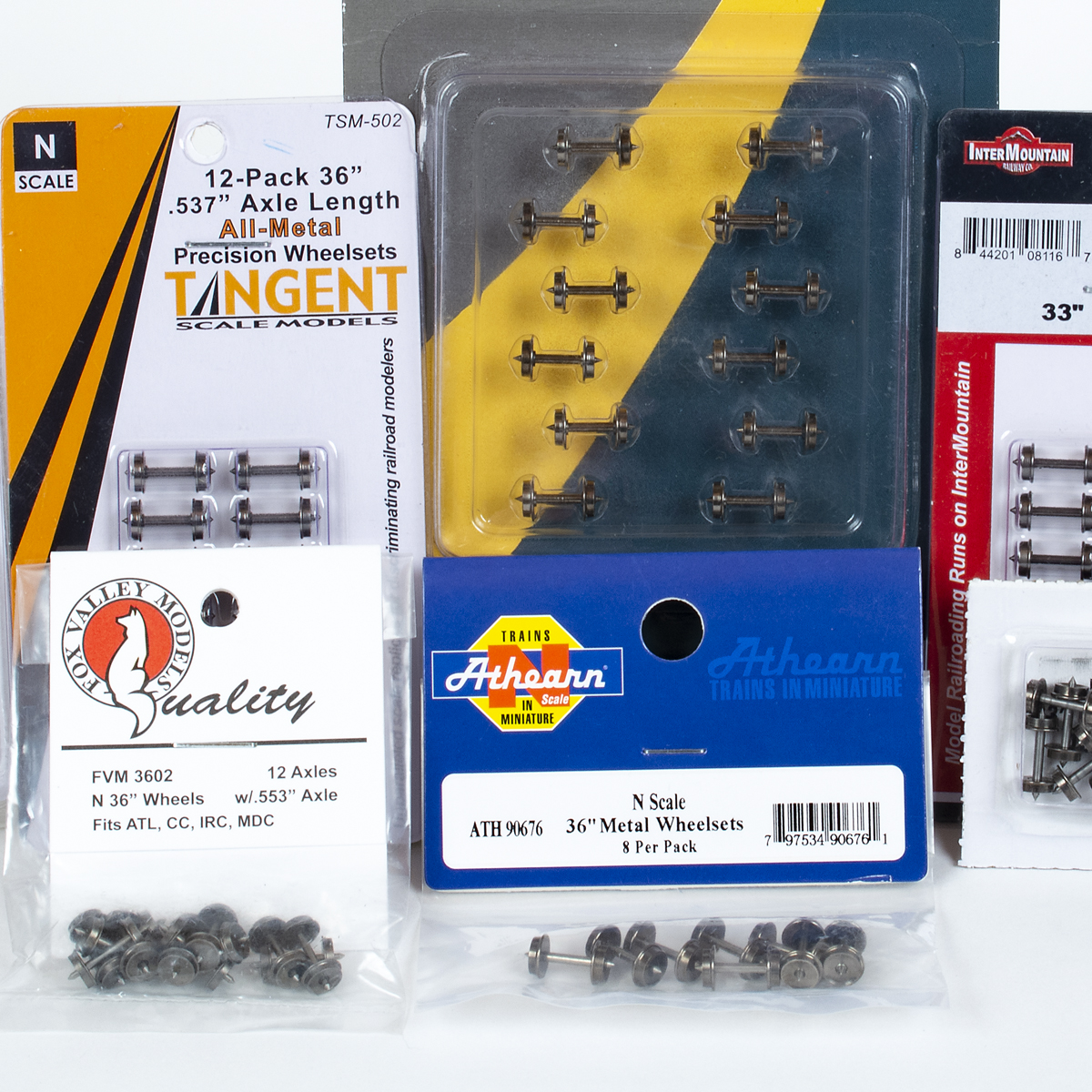
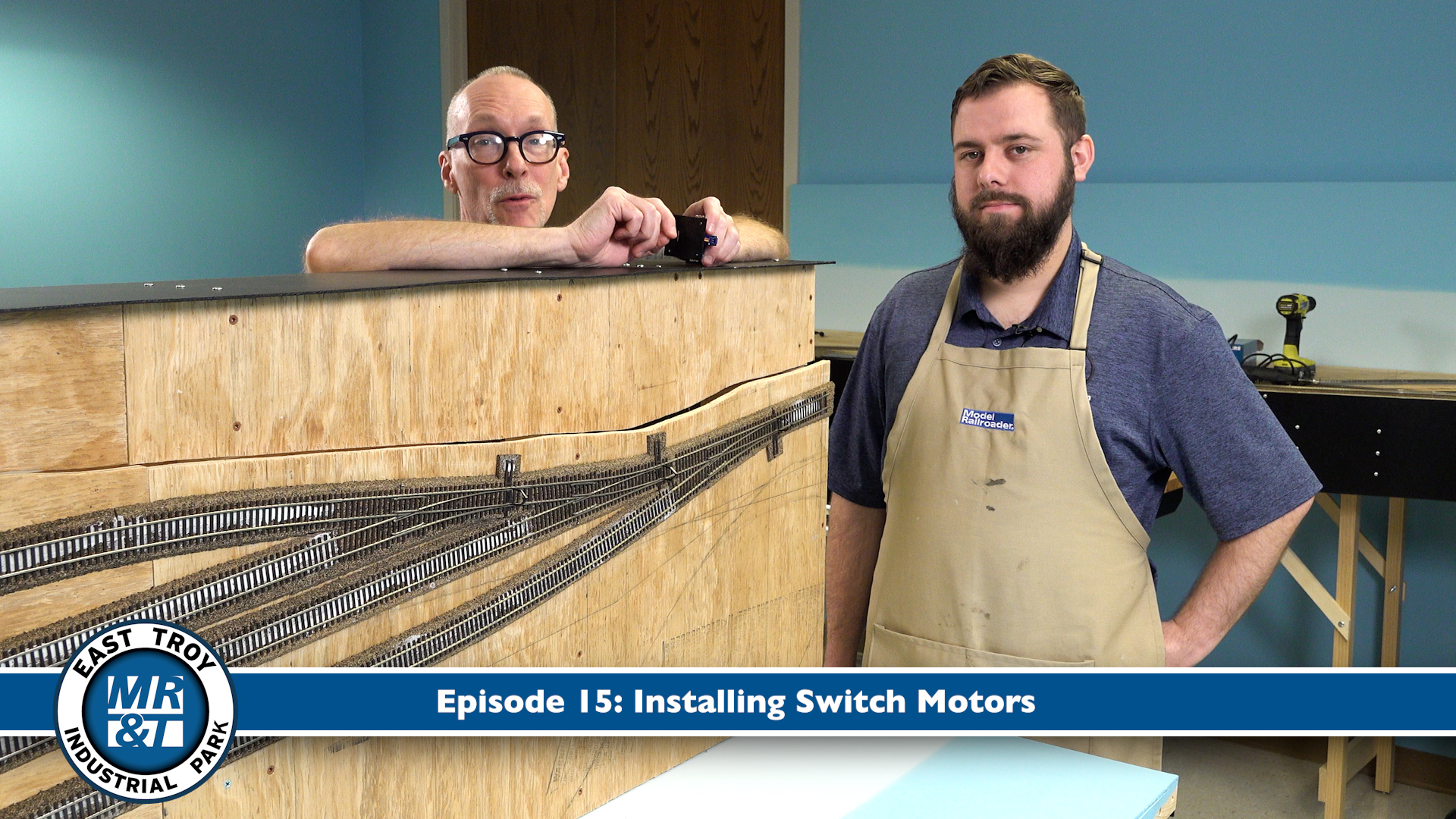
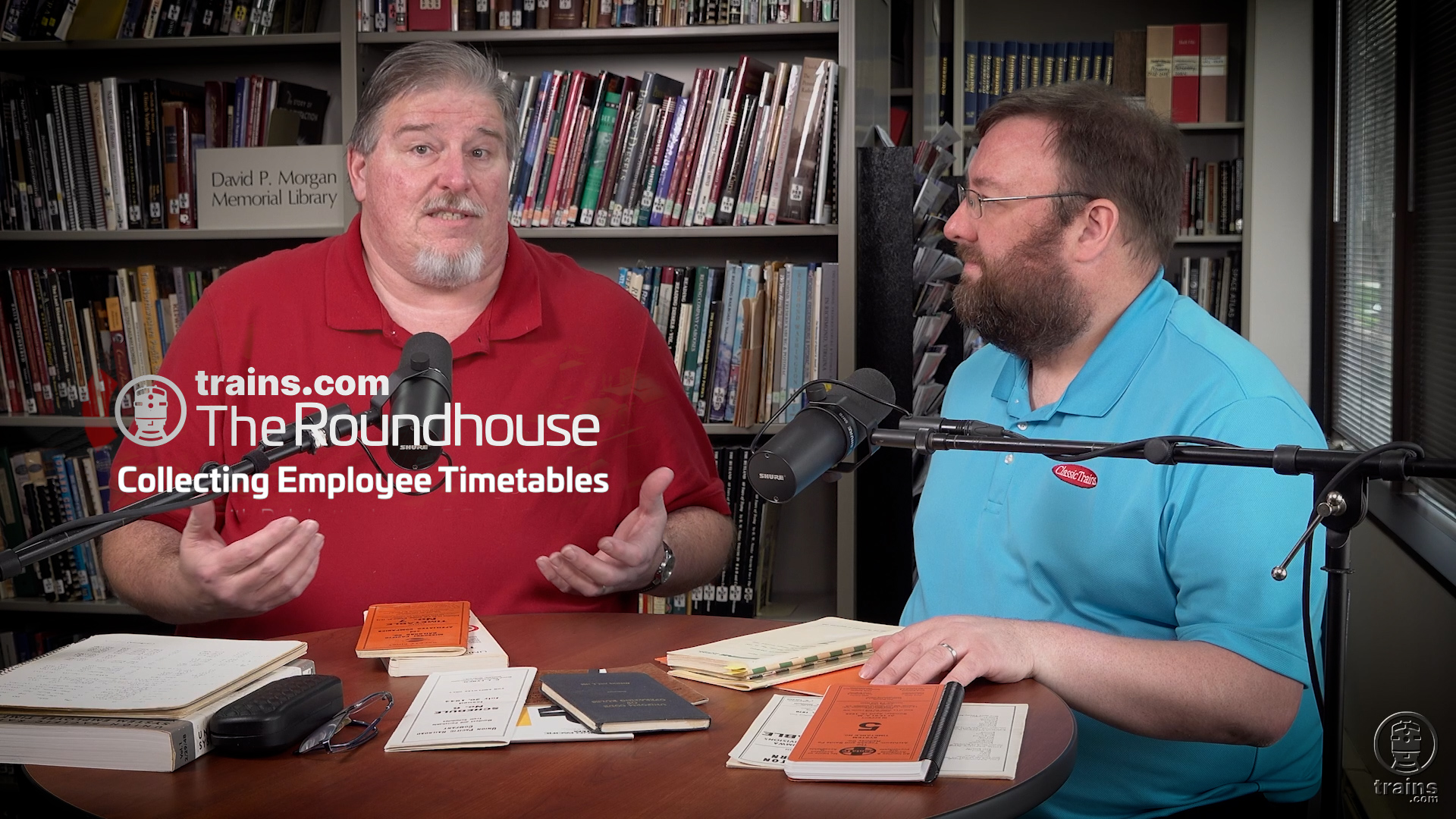





Actually, I have a layout that uses scenery and has that same track plan… its really nice to just run trains around and relax 🙂
I have a poster that’s exactly like the one you have depicted in the photographs of your room.